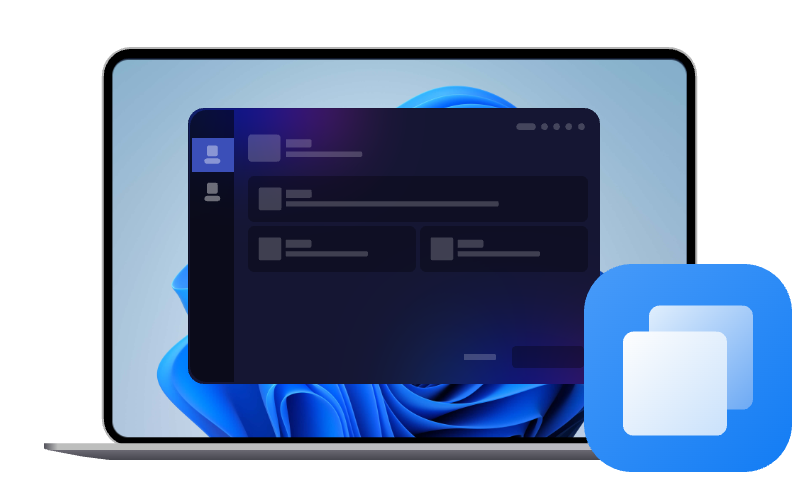How to Install Windows from Command Prompt [Full Guide]
In this article, you’ll learn how to install Windows from Command Prompt, including prepare necessary tools, access the recovery environment, copy Windows installation files, etc. Be sure to clone OS or disk to avoid any risks.
Sometimes, the usual methods of installing Windows don’t work as expected, whether due to system errors, corrupted files, or hardware issues. In these situations, installing Windows from Command Prompt can be a helpful solution. It gives you more control and flexibility, especially when dealing with unresponsive systems or advanced installations.
In this guide, we’ll show you how to install Windows from Command Prompt and explain how it can help with troubleshooting as well (if there are any errors during installation).
- Prerequisites for Installing Windows from Command Prompt
- Access Command Prompt from Windows Recovery Environment
- Install Windows from Command Prompt
- Troubleshooting Common Issues During Installation
Why Install Windows from Command Prompt?
Sometimes, you might need to install Windows from the Command Prompt instead of the usual graphical user interface (GUI). This method offers more control, especially in situations where the traditional installation process isn't working.
- Your system experiences errors while using the standard Windows setup. Installing Windows from Command Prompt might bypass it.
- Set up a system on multiple machines remotely without physical access, primarily for network administrators or tech-savvy users.
- Start a fresh installation without booting Windows, especially if your Windows installation is corrupted and you can't boot the OS.
Prerequisites for Installing Windows from Command Prompt
Before you can begin installing Windows from Command Prompt, there are a few essential tools and requirements you need to ensure everything runs smoothly.
1: Prepare Necessary Tools and Media
- Windows Installation USB/DVD: You’ll need a bootable USB drive or DVD with the Windows installation files, which allows you to install or repair the operating system. If not, create one using tools like the Windows Media Creation Tool.
- Enable Recovery Environment: You need to be sure the Windows Recovery Environment (WinRE)is enabled so that you can boot from the installation media and access Command Prompt through it.
2: Check Your System Requirements
- Minimum Hardware Specs for Installation: To install Windows from the Command Prompt, your system must meet the minimum hardware requirements, including adequate RAM (at least 2GB for 64-bit), a supported processor, and enough available disk space (typically 20GB or more for Windows 10/11).
- Partitioning and Storage Considerations: Before you begin, make sure your hard drive or SSD is properly partitioned and there’s enough free space on the target drive where Windows will be installed. Additionally, consider whether your drive is formatted as NTFS, as Windows requires this file system for installation.
3: Clone OS before Installing Windows to Avoid Any Risks (IMPORTANT!!!)
Installing Windows from Command Prompt is a technical task in itself, and it is likely to mess up your system or cause data loss if you are not careful, especially for computer newbies. Thus, it’s advisable to clone OS, including the operating system, installed programs, personal data, etc., on it to protect them well. You can also clone the entire disk.
AOMEI Cloner is a simple and effective disk cloning software that can clone OS only, or an entire disk in Windows 7, 8, 10, 11, and Windows Servers without any obstacle. By default, it uses the Intelligent clone feature to clone only the used sectors of a drive, greatly saving time and disk space, and resizes the partition size automatically if the target disk is larger.
In addition, if your computer is not bootable, it allows you to clone hard drive with bootable USB, CD/DVD, or ISO file by creating bootable media on a working computer and then starting the failing computer from it.
Step 1. Connect the target drive to your computer for cloning. Open AOMEI Cloner after installing and click Clone > Disk Clone subsequently.
Step 2. Select the two disks in the Source Disk and Destination Disk windows. Note that the destination partition will be overwritten or deleted. Please be sure you select the right one and backup your data (if there is) in advance. Then, click OK to continue.
Step 3. Be sure Make full use of disk space is checked (if the target drive is larger), and enable SSD Alignment to improve SSD disk performance. Then, click Start Clone to clone OS to new hard drive or SSD.
Download AOMEI Cloner to protect your system and data well!
How to Access Command Prompt from Windows Recovery Environment
Accessing the Command Prompt during a clean installation is essential for advanced setups, troubleshooting, or repairing your system. Here’s how:
Step 1. Insert your Windows installation USB or DVD into the computer you want to install Windows on.
Step 2. Reboot your computer and, as it starts up, press the required key to access the Boot menu. It’s usually F12, ESC, F2, F10, or DEL, depending on your system.
Step 3. From the Boot menu, select the option to boot from your USB or DVD drive.
Step 4. After loading, you’ll see the Windows Setup screen. Choose your language, time, and keyboard preferences. Then, click Next.
Step 5. Instead of selecting Install Now, click Repair your computer and then Choose an option > Troubleshoot > Advanced Options > Command Prompt to access it.
Alternatively, you can directly press Shift + F10 on the initial Windows Setup screen to open the Command Prompt window. Once the Command Prompt window opens, you’re ready to install Windows from Command Prompt.
How to Install Windows from Command Prompt
Now it’s time to start the actual Windows installation, involving prepare the disk, copy Windows files, and initiate the setup process. Here’s a step-by-step guide:
Step 1. Prepare the Disk and Partitions using DiskPart
Type diskpart in the Command Prompt and hit Enter to open this tool. Then, find the disk where you want to install Windows and partition it with the following commands:
- list disk
- select disk X (Replace X with the disk number where you want to install Windows)
- clean
- create partition primary.
- format fs=ntfs quick
- assign letter=C (or other available letters)
- exit
- Note:✎...
- The clean command wipes the disk completely. Be cautious, as this will erase all data on the selected disk.
Step 2. Copy Windows Files Using DISM
Insert your Windows installation USB/DVD and navigate to the drive containing the installation files (e.g., D: or E:), identify the index of the Windows image you want to install, and apply it to the prepared partition, making the system ready for installation.
- dism /get-wiminfo /index:1 /imagefile:D:\sources\install.wim
- dism /apply-image /imagefile:D:\sources\install.wim /index:1 /applydir:C:\
Replace D: with the drive letter of your installation media and C: with the drive letter of the partition where you want to install Windows.
Step 3. Complete the Windows Installation
To complete the Windows installation, you need to revert any pending installation actions and prepare the system for first boot. Then, trigger it in the following commands.
- dism /image:C:\ /cleanup-image /revertpendingactions
- dism /image:C:\ /set-target /boot
After that, manually restart the system and allow it to complete the process. You may need to provide a product key, configure settings, and create user accounts during the setup.
Step 4. Install additional Windows features (if necessary)
dism /image:C:\ /enable-feature /featurename:NetFx3 /all
Step 5. Add drivers during the installation process
dism /image:C:\ /add-driver /driver:D:\drivers\ /recurse
Troubleshooting Common Issues During Installation
During the Windows installation process, you might encounter errors related to missing files, partition issues, incomplete setups, etc. Check the following errors and solutions to fix them if you have any problems during this process.
Part 1: Error Fixes for Missing Files or Partition Issues
#1: Windows cannot be installed on this disk
This error typically occurs when your disk isn’t formatted properly or the partition scheme is incompatible. You can fix this by using Diskpart to clean the disk and create a new partition. In the Command Prompt window, type as follows:
- diskpart
- Select disk X
- clean
- create partition primary.
- format fs=ntfs quick.
Exit Diskpart and continue with the installation.
#2: The selected disk is of the GPT partition style
This error happens if you are trying to install Windows on a disk with a GPT partition style, but your system’s firmware uses the Legacy BIOS mode (which supports MBR). To fix it in the Command Prompt window:
- diskpart
- select disk X
- clean
- convert mbr
Create a new partition, format it, and proceed with the installation.
#3: Windows could not copy the files required for installation
This error can happen due to corrupted installation files or issues with the installation media. You can attempt the following:
- Verify that the installation media is not damaged or corrupt.
- Try copying the files again using commands like xcopy or robocopy.
- You can also use DISM to check the health of the installation image and attempt to fix any issues: dism /image:C:\ /cleanup-image /restorehealth
#4: The required CD/DVD drive device driver is missing
This error occurs if the installer cannot detect your storage controller drivers. You can fix this by loading the necessary drivers manually from a USB drive:
Download the required drivers for your storage controller (SATA, RAID, etc.) from your motherboard or system manufacturer’s website. Then, during the Windows setup process, choose "Load Driver" and browse to the location of the drivers.
Part 2: Repair Windows Installation Using Command Prompt
If your Windows installation is damaged or corrupted or if the system fails to boot properly, you can repair it using the Command Prompt.
#1: Repair Boot Issues with bootrec
If Windows fails to boot or encounters boot errors, you can try bootrec command to repair MBR and BCD.
- bootrec /fixmbr
- bootrec /fixboot
- bootrec /rebuildbcd
#2: Scan Disk for Corrupted System Files using SFC
Try the sfc /scannow command if Windows is unable to load. It can scan the system for corrupt or missing system files and automatically attempt to repair them.
#3: Repair Windows Image with DISM
DISM helps repair any corruption in the Windows image and restore the system to its original state.In the Command Prompt window, type:
dism /online /cleanup-image /restorehealth
#4: Check Disk Errors using CHKDSK
If you suspect hard drive issues, such as bad sectors or file system errors, you can use chkdsk to scan and fix disk errors.
chkdsk C: /f /r (Replace C: with the appropriate drive letter if needed)
Conclusion
You can successfully install Windows from Command Prompt as long as you follow the above steps carefully, including prepare necessary tools, access the Windows recovery environment, partition the drive, copy Windows files to it, etc. Don’t miss or skip any step.
Please be sure to clone OS before installing Windows. This minimizes downtime if there are any errors on the system or data loss during Windows installation. You can directly replace it witha cloned drive.

